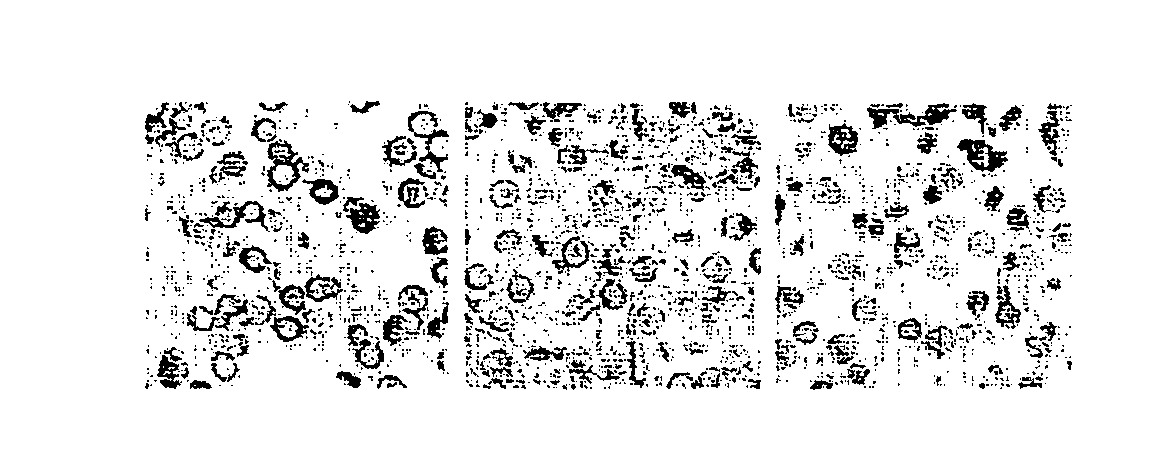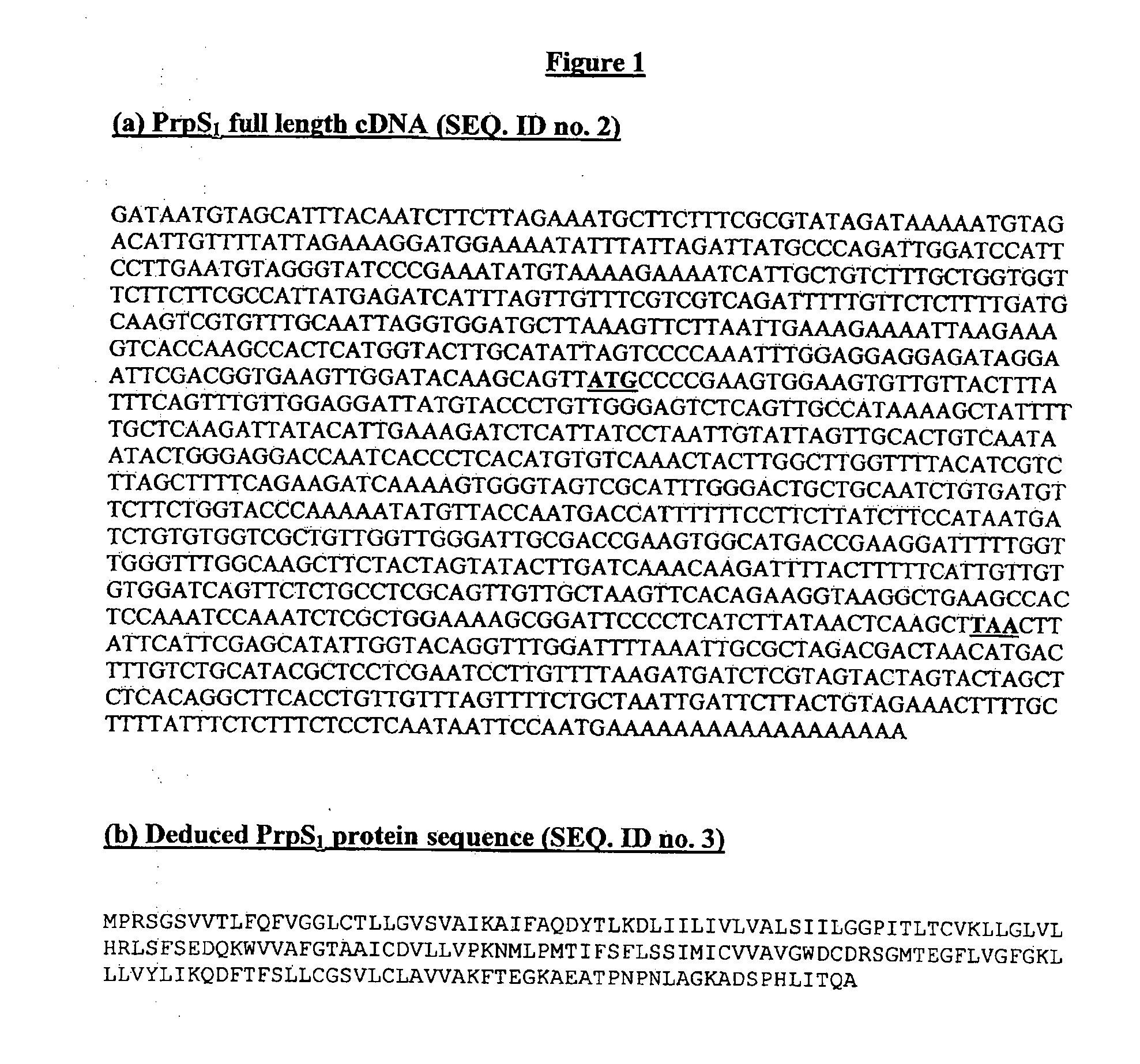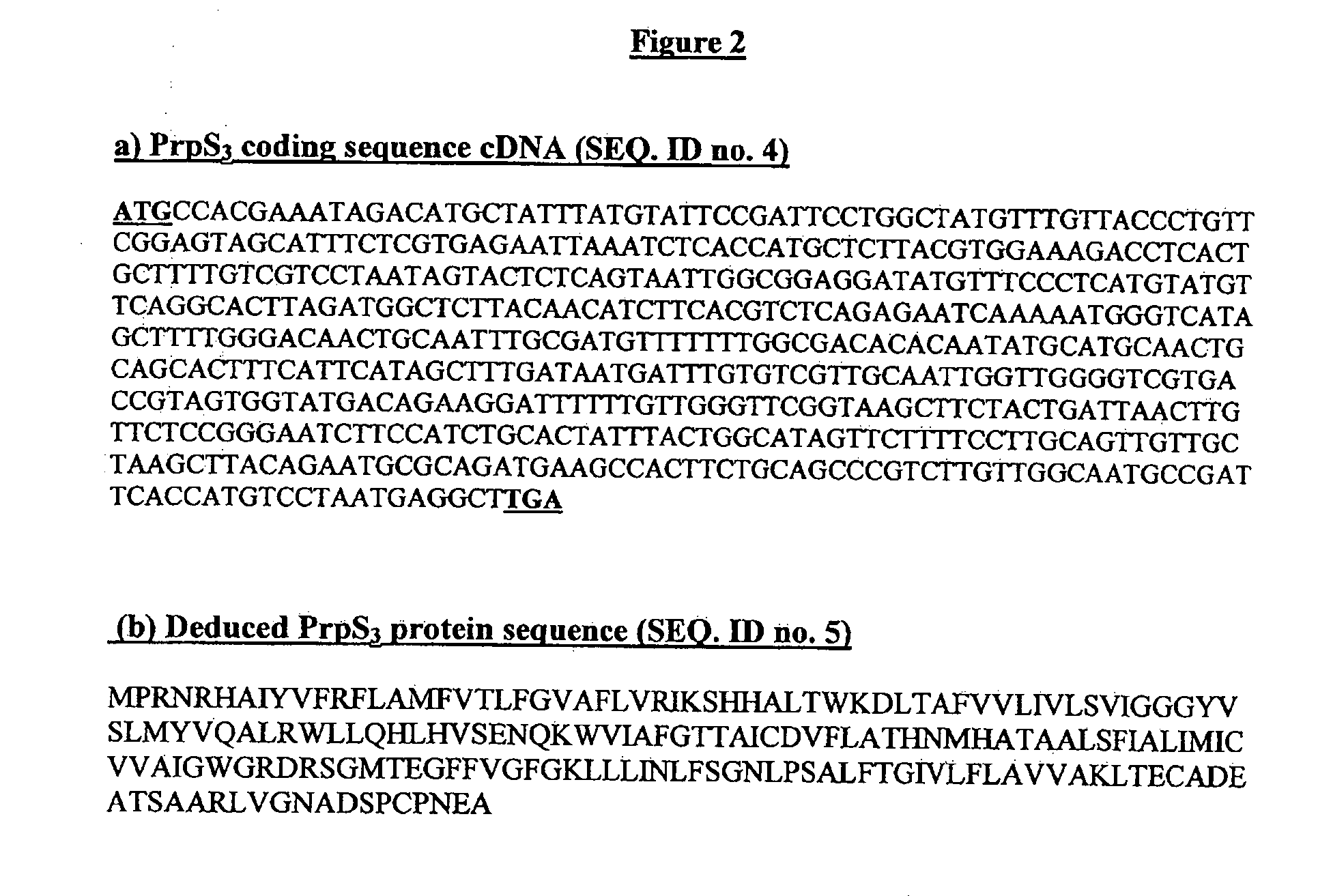Engineering of plants to exhibit self-compatibility
a plant and self-compatibility technology, applied in foreign genetic material cells, plant cells, angiosperms/flowering plants, etc., can solve the problems of reduced male fertility of transgenic i>arabidopsis /i>plant lines co-expressing the same pistil and pollen s proteins, and achieve the effect of prolonging the shelf life of ornamental plants or cut flowers, and reducing the number of transgenic plants
- Summary
- Abstract
- Description
- Claims
- Application Information
AI Technical Summary
Benefits of technology
Problems solved by technology
Method used
Image
Examples
example 1
Cloning & Characterisation of PrpS1, PrpS3 and PrpS8
[0070]Summary
[0071]A genomic clone of PrpS1 was identified by nucleotide sequence analysis of a cloned 42 kb fragment carrying the S1 locus, obtained by screening a Papaver rhoeas S1S3 cosmid library with the pistil S1 cDNA. A PrpS1, PrpS3 and PrpS8 cDNA clone were subsequently obtained using a combination of RT-PCR, 5′-RACE and 3′-RACE PCR.
[0072]Detailed Methods
[0073]Cloning and Sequence Analysis
[0074]A genomic DNA library from Papaver rhoeas S1S3 plants was constructed in SuperCos1 (Stratagene) following the manufacturer's instructions. The library was constructed by BamHI / XbaI digestion and cloning into the BamHI / XbaI sites of SuperCos1. Screening the library with pistil S1 cDNA (see FIG. 4; SEQ. ID no. 8) resulted in the isolation of a 42 kb fragment containing the pistil S1 allele. The DNA upstream and downstream of the pistil S1 allele was sequenced and analyzed using BLAST (http: / / ncbi.nlm.nih.qov / BLAST), ORF Finder (http: / ...
example 2
Linkage Analysis
[0091]In summary, linkage analysis was carried out on DNA extracted from individual plants from full-sib families segregating either for the haplotypes S1S3 and S3S8 or S1S8 and S3S8 using gene specific primers for both pistil S and PrpS, in order to demonstrate linkage of PrpS with pistil S and, therefore, the S locus.
[0092]Method
[0093]The genomic DNA from leaf of >30 plants from a single family segregating for S1S3or S3S8 was extracted using Nucleon Phytopure plant DNA extraction kit (Amersham Biosciences). PCR was carried out on the DNA samples, testing for the presence of the S1, S3, S8 genes and the PrpS1, Prp3 and PrpS8 genes, using gene-specific primers as follows
S1:(SEQ. ID no. 14)5′ primer-GGCATATGTTCTTTCCTGTTATTGAGGTGCGT(SEQ. ID no. 15)3′ primer-CCGGATCCTCAGGTTCGACCTTCCTTCCS3:(SEQ. ID no. 16)5′ primer-CGCATATGATCGGCTTTACACGTATTCAAGTG(SEQ. ID no. 17)3′ primer-CCGGATCCTCAGACTTCCTTCTCACCCATTCCS8:(SEQ. ID no. 18)5′ primer-CTTCTTGACCTTGGCCTCATCTCG(SEQ. ID no. 19...
example 3
Pollen Inhibition in In Vitro SI Assays
[0096]Summary
[0097]A 15 amino acid peptide corresponding to part of the predicted external domain of PrpS1 was tested for ability to block pollen tube growth inhibition in an in vitro SI assay in which pollen was grown on solid germination medium before SI induction using recombinant pistil S protein (Thomas and Franklin-Tong (2004) ibid). To confirm a functional role and allele specificity for PrpS1 and PrpS8 in pollen tube inhibition, a gene specific antisense approach was also used with an in vitro SI assay.
[0098]Methods
[0100]Based on the TMHMM (http: / / www.cbs.dtu.dk / services / TMHMM) prediction of PrpS1, a 15 amino acid residue peptide (DQKWWAFGTAAICD; SEQ. ID no. 26) corresponding to part of the predicted 35 amino acid residue external domain (see FIG. 5b) and two randomized versions of this peptide (1:GVVCAWIFDTAAQKD (SEQ. ID no. 27) and 2: FTVDVKDCAAAWGQI (SEQ. ID no. 28)) were synthesized by Alta Bioscience (Universi...
PUM
| Property | Measurement | Unit |
|---|---|---|
| pH | aaaaa | aaaaa |
| pH | aaaaa | aaaaa |
| size | aaaaa | aaaaa |
Abstract
Description
Claims
Application Information
 Login to View More
Login to View More - R&D
- Intellectual Property
- Life Sciences
- Materials
- Tech Scout
- Unparalleled Data Quality
- Higher Quality Content
- 60% Fewer Hallucinations
Browse by: Latest US Patents, China's latest patents, Technical Efficacy Thesaurus, Application Domain, Technology Topic, Popular Technical Reports.
© 2025 PatSnap. All rights reserved.Legal|Privacy policy|Modern Slavery Act Transparency Statement|Sitemap|About US| Contact US: help@patsnap.com



